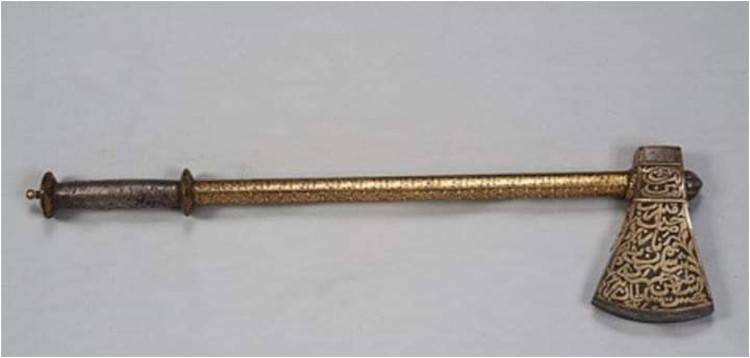
This battle axe, on display at the National Museum in New Delhi, once belonged to Emperor Nader Shah, the Shah of Persia (1736–47) and the founder of the Afsharid dynasty of Persia. He invaded the Mughal Empire, eventually attacking Delhi in March 1739. His army easily defeated the Mughals at the battle at Karnal and eventually captured the Mughal capital in the aftermath of the battle.
His axe has been richly worked with gold. While its tall handle has been adorned with beautiful floral designs, its blade has inscribed on it verses from the Quran.
It also carries Nadir Shah’s name and his title Sahib-i-Qiran. Both sides of the blade, socket and all eight sides of the octagonal handle have been thickly plated in gold and inscriptions and all decorative patterns have been engraved in high relief. The inscriptions are rendered in Persian using Nastaliq script and the floral patterns used for embellishing the handle pursue tehnishan style.
His axe has been richly worked with gold. While its tall handle has been adorned with beautiful floral designs, its blade has inscribed on it verses from the Quran.
It also carries Nadir Shah’s name and his title Sahib-i-Qiran. Both sides of the blade, socket and all eight sides of the octagonal handle have been thickly plated in gold and inscriptions and all decorative patterns have been engraved in high relief. The inscriptions are rendered in Persian using Nastaliq script and the floral patterns used for embellishing the handle pursue tehnishan style.

